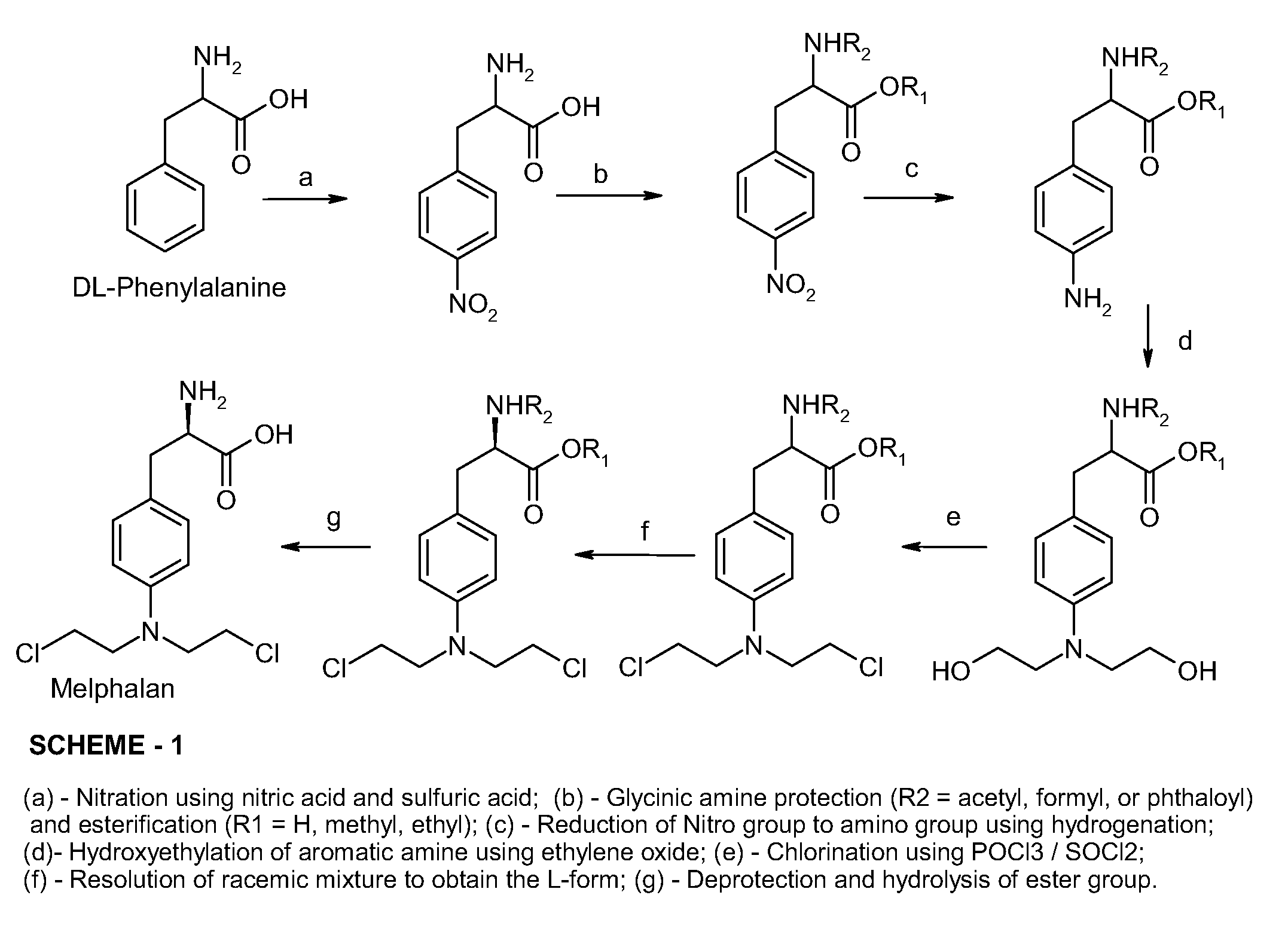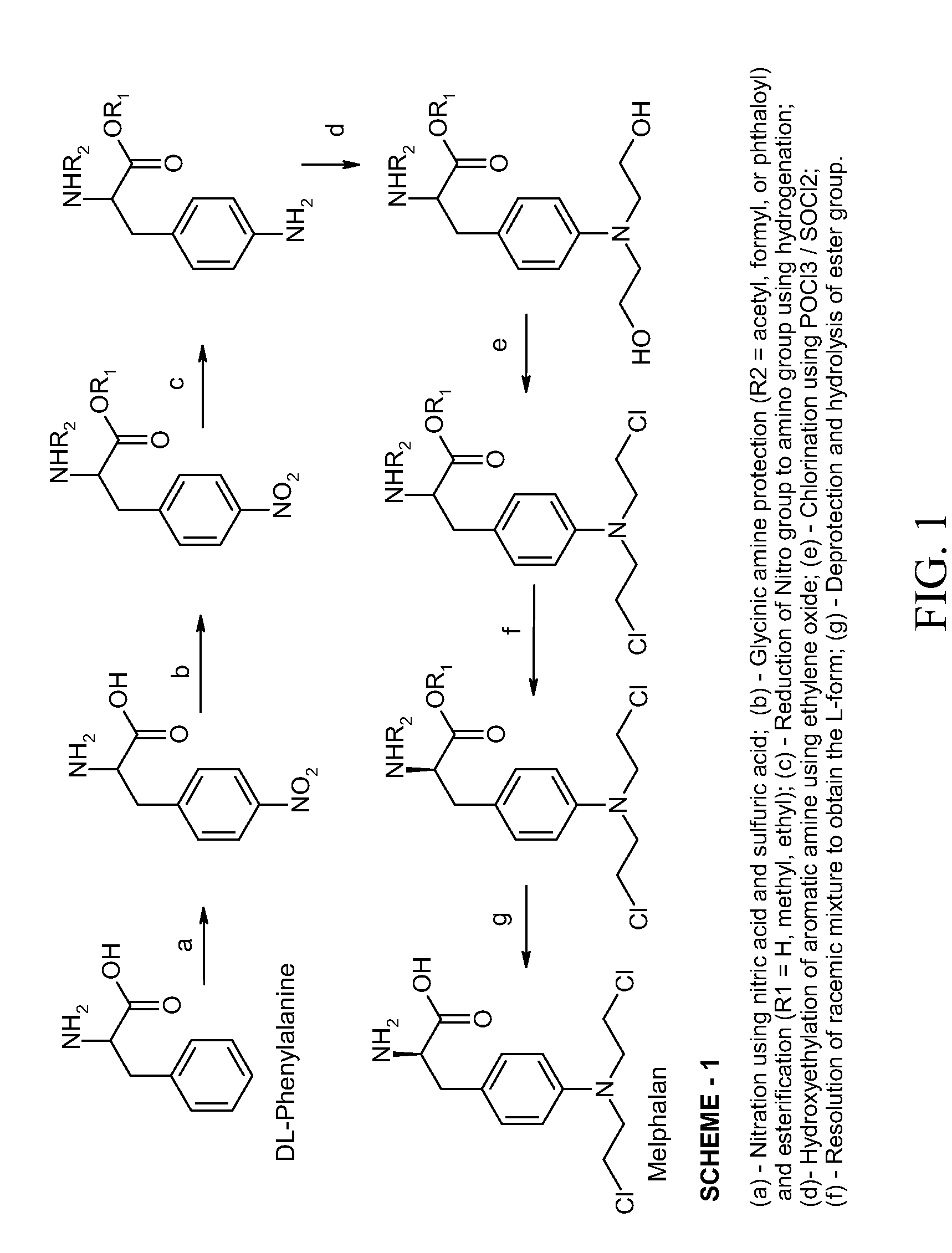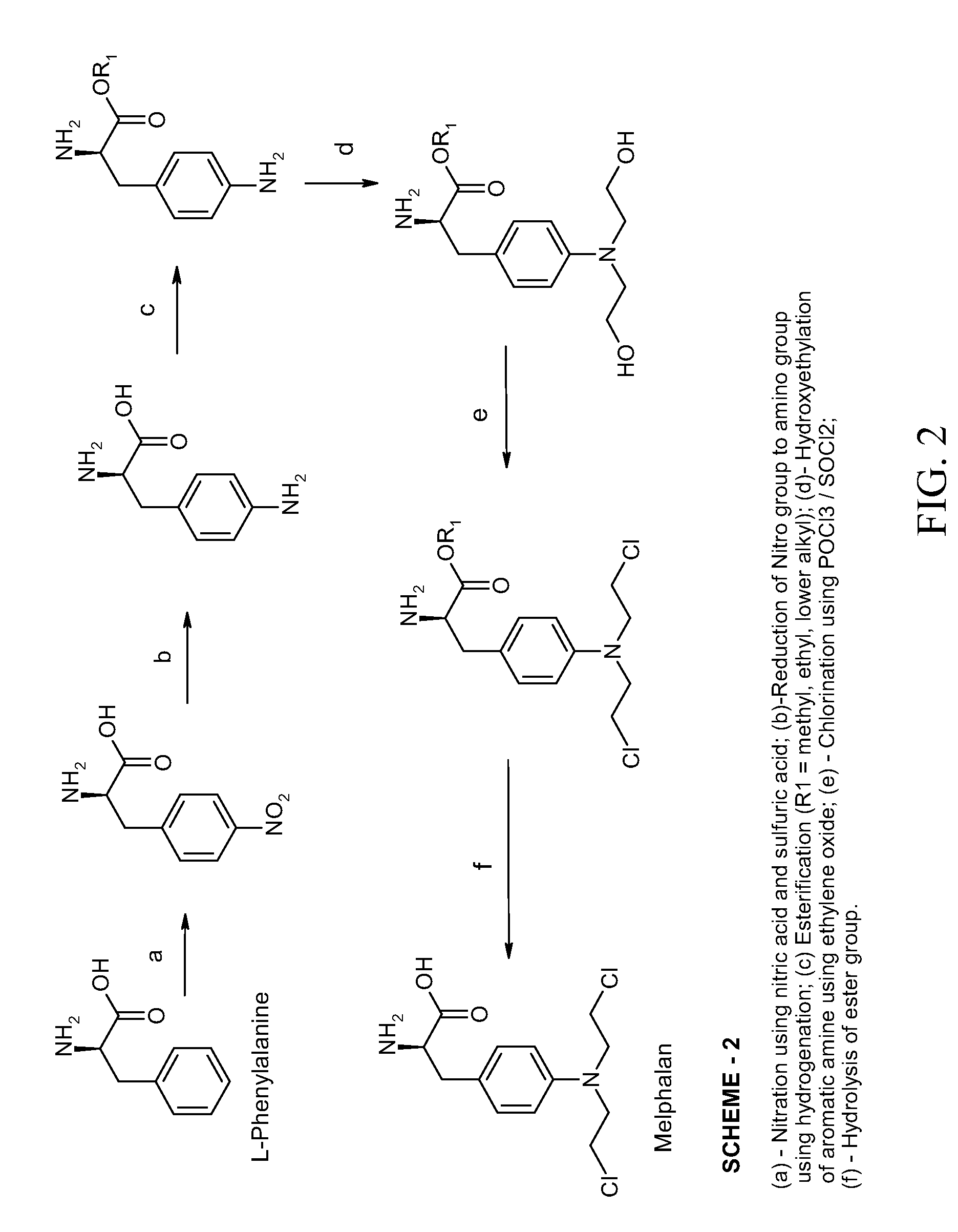Process Of Making Optically Pure Melphalan
a technology of optically pure melphalan and synthetic process, which is applied in the preparation of carboxylic compounds, organic racemisation, organic chemistry, etc., can solve the problem of n-protected phenylalanine tying to racemization
- Summary
- Abstract
- Description
- Claims
- Application Information
AI Technical Summary
Benefits of technology
Problems solved by technology
Method used
Image
Examples
example-1
Process of Making 4-amino-L-phenylalanine
[0044]L-Phenylalanine was converted to 4-nitro-L-phenylalanine by a conventional nitration process known in the art. Thereafter, about 100 g of 4-nitro-L-phenylalanine was dissolved in about 600 mL of about 3.5% methanolic sodium hydroxide solution and hydrogenated by hydrogen gas at a pressure of about 45 psi in the presence of a 5% palladium / carbon catalyst with the pH of the solution being about 11. The temperature of the reaction mixture was maintained from about 20° C. to about 40° C. The reaction mixture was periodically monitored for the completion of reaction by use of HPLC analysis. The reaction mixture was then filtered to remove the palladium / carbon catalyst and neutralized to about pH 7 with acetic acid. The neutralized filtrate was cooled to about 5° C., until 4-amino-L-phenylalanine precipitated out. The precipitate was isolated by filtration, washed with methanol and dried. (Weight 0.76 g, HPLC Purity 98%.)
example-2
Process of Making 4-(bis-(2-hydroxyethyl)amino)-L-phenylalanine and Purification of 4-(bis-(2-hydroxyethyl)amino)-L-phenylalanine
(a) Preparation of crude 4-(bis-(2-hydroxyethyl)amino)-L-phenylalanine
[0045]About 76 g of 4-amino-L-phenylalanine obtained in Example-1 was dissolved in about 1500 mL water. Into this solution about 84 g of Ethylene oxide gas was purged over a period of about 4 hours at a temperature in the range of from about 20° C. to about 50° C. Periodically, the reaction mixture was tested by HPLC to monitor the degree of completion of the reaction as determined by the content of the in situ intermediate 4-(2-hydroxyethyl)amino)-L-phenylalanine until a level of less than about 1% 4-amino-L-phenylalanine is reached. The crude 4-(bis-(2-hydroxyethyl)amino)-L-phenylalanine was isolated by precipitation by the addition of isopropanol to the concentrated residue of the reaction mixture. The precipitated crude 4-(bis-(2-hydroxyethyl)amino)-L-phenylalanine was filtered, wash...
example-3
Process of making 4-(bis-(2-hydroxyethyl)amino)-L-phenylalanine Methyl Ester
[0049]About 60 g of dried and purified 4-(bis-(2-hydroxyethyl)amino)-L-phenylalanine was mixed with 1500 mL of methanol. The reaction mass was dehydrated by distilling out about 20% of methanol. To the dry reaction mixture about 300 g of dry hydrochloric acid gas was purged in. The reaction mass was warmed to a temperature of about 65° C. and the reaction was promoted by removing the water formed in the reaction by distillation. The progress of the reaction was monitored by HPLC analysis. Upon completion of esterification, the reaction mass was neutralized with sodium bicarbonate and the precipitated inorganic salt was isolated by filtration. The filtrate was collected, concentrated by distillation, and dehydrated to a thick mass. (the weight of reaction mass residue was 60 g, its purity 96%.)
PUM
| Property | Measurement | Unit |
|---|---|---|
| temperature | aaaaa | aaaaa |
| temperature | aaaaa | aaaaa |
| temperature | aaaaa | aaaaa |
Abstract
Description
Claims
Application Information
 Login to View More
Login to View More - R&D
- Intellectual Property
- Life Sciences
- Materials
- Tech Scout
- Unparalleled Data Quality
- Higher Quality Content
- 60% Fewer Hallucinations
Browse by: Latest US Patents, China's latest patents, Technical Efficacy Thesaurus, Application Domain, Technology Topic, Popular Technical Reports.
© 2025 PatSnap. All rights reserved.Legal|Privacy policy|Modern Slavery Act Transparency Statement|Sitemap|About US| Contact US: help@patsnap.com



